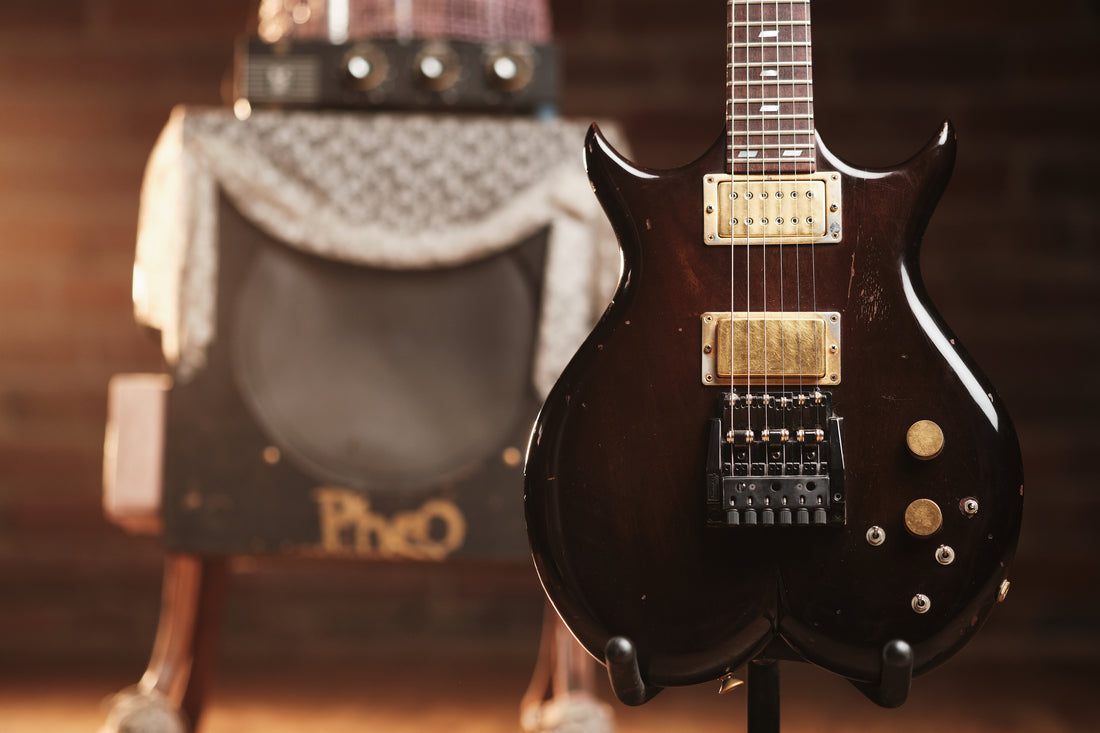1968 Gibson Johnny Smith

It’s funny that one of the most unique voices in 20th century popular guitar had one of the most generic names imaginable. John Henry Smith, though bearing no relation to the famous West Virginia steel-driving man, could certainly swing a mean hammer in a musical sense. In addition to a prolific list of credits, Johnny also famously lent his name to an impressive number of signature guitars over the years. In addition to his most famous D’Angelico, Johnny Smith models have been offered by Guild, Gibson, and later Heritage. Consistent with his clean-cut image, his signature models didn’t stray far from the standard 17” acoustic archtop design produced so ubiquitously in the 40s and 50s, but were always subtly distinctive in their own way.
In the eyes of archtop purists, (I include myself in this group) the advent of the magnetic pickup was about the most horrifying trend to ever strike the world of jazz guitar. The process of voicing of the top became simply a matter of reducing feedback at high volume, the exact antithesis of creating a dynamic and responsive acoustic instrument. It was like modifying a Ferrari to pull a trailer. It was the best of neither world. Johnny Smith circumvented this issue by designating the use of a neck extension-mounted pickup in combination with pick guard-mounted electronics, a configuration that today is the industry standard. This relieved the soundboard of all unnecessary mass, allowing an amplified signal to coexist with an acoustically pleasing instrument. This particular guitar is a 1968 model and remains in remarkably clean condition. With the exception of a replaced bridge, it is completely original and is a shining example of Gibson’s pre-Norlin archtop prowess.
1984 R.A. Benedict Custom

Every luthier out there has spent at least a few long and lonely nights in their respective woodshops. Perhaps none quite as lonely, though, as the fateful evening in 1984 which resulted in this creation by Roger Benedict. This was the product of days long before the internet and even longer before the almighty dating app. Once the bars closed, if you wanted female companionship you’d better be damn good with a spokeshave. And that night, Roger was a regular Michelangelo.
All levity aside, though, we have absolutely no idea why this thing exists. Benedict would go on to build guitars for Prince in later years, which should surprise no one. Ghostbusters was released the same year, so Sigourney Weaver may have acted as an unknowing influence. All we know is that it bears an uncanny resemblance to an ass or Jay Leno’s chin. Despite the goofy aesthetics it’s obvious the quality of the instrument is absolutely top-notch. The Kahler vibrato and quartet of mini switches are 100% on brand and will deliver the exact tone desired by the kind of guy who’d agree to be seen with this. Think Jackie Treehorn from The Big Lebowski. The gold hardware rounds out the design with a touch of squalor-elegance, like staying in the most expensive suite at the worst hotel in Atlantic City. If you do decide that this is the guitar for you, be cautious of who you lend it out to. It just may come back the next day with some fresh buckle rash and a mystery itch.
1954 Gibson ES-175

I’ve never been shy about expressing my fondness for the humble ES-175. Often looked down upon for it’s laminated top and muffled unplugged tone, the majority of jazz players will tend towards the carved-top classics like the L-5 or Super 400. What they don’t know, though, is that the ES-175 is not presuming to be an L-5 or a Super 400 or any traditional archtop for that matter. Its unique combination of construction methods and features, while originally conceived to cut cost, make it its own animal entirely.
I’ve spoken ad nauseam here, and in other forums, about the plights of the electrification of archtop guitars. Again, generally speaking it is the worst of both worlds. The 175 unintentionally outsmarted us all by never attempting to be acoustically pleasing in the first place. The top, as we know, is laminated maple; probably quite similar to the stuff that would later make up the bodies of the ES-335 and its cousins. Accordingly, it could be assumed that the plies probably are riddled with voids and are filled to the gills with phenol formaldehyde glue. Not the best recipe for resonance. Perfect, though, for an attack-heavy and feedback-resistant amplified acoustic tone. Jim Hall was a big fan of this different approach. So was Wes Montgomery. I think Herb Ellis played one too. This specific 175 has been played hard but taken care of, with only some minor repairs to show for it. Its original Gibson P-90 in the neck position is responsible for some of my favorite guitar tones across several genres. If you know, you know.
1949 Epiphone Zephyr Regent

It’s unfortunate that the long-term legacy of Epiphone will almost certainly be dominated by its use as Gibson’s budget brand. Prior to Gibson’s purchase of the New York-based brand in 1957, Epiphone was their primary competition in the wildly popular arena of archtop guitars. The Zephyr Regent was their top-of-the-line model at the time and was a direct competitor, in both price and prestige, to Gibson’s legendary flagship L-5C. While the Zephyr might not hold quite the gravitas of a 40s L-5 these days, it did have a number of interesting features exclusive to their brand.
One of my favorite vintage Epiphone components is the visually striking “Frequensator” tailpiece. Introduced in 1937, the new design was created by Epi employee (and possible birthday clown) Herb Sunshine. The idea was that varied string lengths would warm the bass strings while brightening the trebles and eliminate dead spots throughout the fretboard. Perhaps the star of the show is the pair of extremely unique “tone spectrum” pickups. Only available on higher-end Epiphones from 1949-1954, these Firebird-esque single coils are structurally unlike anything that had come before or since, and have a singular voice that is immediately recognizable. As far as high-end vintage New York archtops go, I’m quite sure this Zephyr Regent can’t be eclipsed for anywhere near this price.
2002 Fender “Rocky” Stratocaster

A faithful replica of one of the most drug-addled guitars in Beatles history. Starting life as a Custom Shop 1960 Closet Classic Strat in sonic blue, this instrument has been painstakingly painted to match the famous ’61 Strat that was heavily used and modified by George Harrison during Beatles’ most prolific years. Originally purchased in 1965, Harrison’s Strat went immediately into rotation on some of the band’s biggest hits. The first appearance of the Strat was during the Help! sessions and was instrumental in shaping the sound of tracks like “You’re Gonna Lose That Girl” and “Ticket to Ride.” Later that year it would again play a main role on the Rubber Soul record, once more in ’66 on Revolver, and get even more use the following year on Sgt. Pepper’s.
This is where things took a turn for the previously unmolested Stratocaster. Sometime in the middle of 1967, presumably in some sort of kaleidoscopic stupor, George took brush to guitar to create possibly the most stereotypical acid trip graphics of all time. It didn’t take long for the band’s subject matter to evolve from songs about holding hands to walruses and transcendentalism. By 1969 George had completed the paint job by writing “Bebopalula” and “Go Cat Go” in red paint, obviously a reference to Gene Vincent. (If you can draw even the most tangential parallel between the Blue Caps and post-Sgt. Pepper Beatles, edify me please.) While an unthinkable abomination by today’s standards, it may have been one of the most important Strats of the last 70 years, and this 2002 recreation is one of the most faithful replicas out there.


